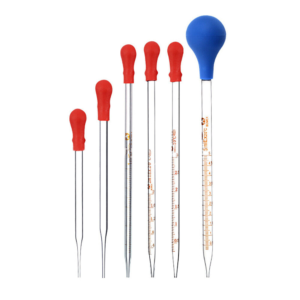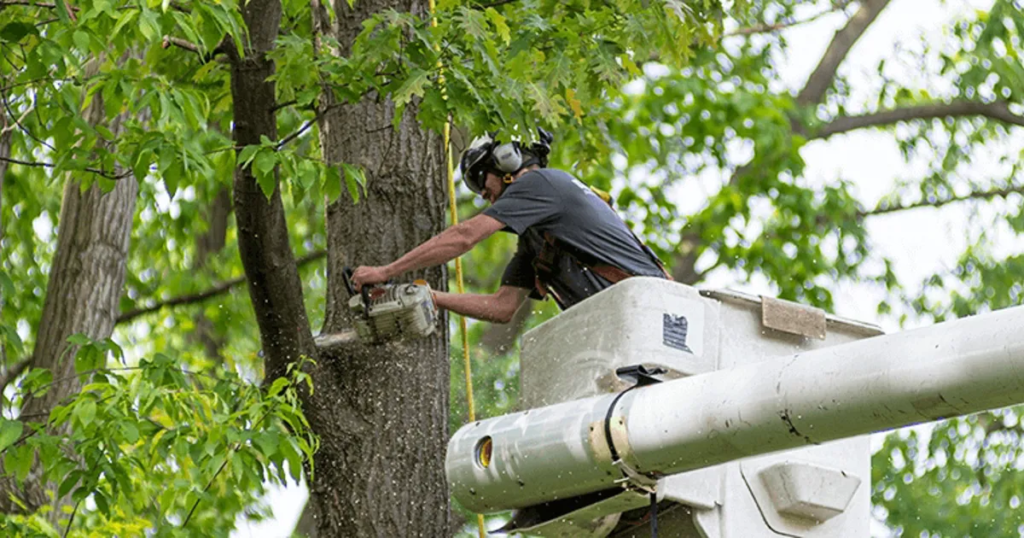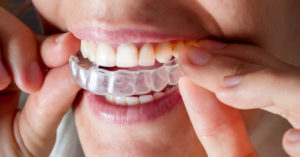Glass Pipettes are essential tools for transferring liquids in laboratory environments. They offer several advantages over other pipettes, including their accuracy, durability, chemical inertness, and reusability.
Pipettes are used in chemistry, microbiology, and forensic science labs to transfer precise volumes of chemicals. They are also useful for preparing solutions during biochemical reactions and tests.

Glass pipettes are calibrated laboratory equipment used to handle liquids. They are known for their accuracy and precision, especially when working with volumes in milliliters (ml). They are also durable and can withstand harsh chemicals and thermal shocks, making them ideal for various lab applications. They can be found in laboratories and other settings, including hospitals and research institutions.
There are several types of glass pipettes, each designed for specific applications and experimental needs. For example, a graduated pipette has increments marked along the length of its straight glass tube. Other types include a Mohr’s pipette, which has a blow-out ring near the uppermost or suction part of the pipette. The volume markings and the blow-out ring are designed to ensure precise handling of liquid samples in laboratory setups.
The working principle of glass pipettes relies on the capillary action and air displacement to aspirate and dispense liquids. They are often referred to as “volumetric pipettes” due to their ability to accurately measure and transfer small amounts of liquid. This precision is important for a wide range of laboratory tasks, including solution dilution, chemical reactions, and pH testing.
However, using glass pipettes can be time-consuming, since each transfer must be carefully executed. This process is especially challenging for experiments that require multiple transfers or that are sensitive to time. In addition, it is necessary to properly store the pipettes and sterilize them after each use.
Glass Pasteur pipettes are available in a wide variety of sizes and shapes. They are crafted from borosilicate glass, which makes them resistant to thermal shock and chemical exposure. They are also designed to withstand repetitive use, making them an ideal choice for high-volume laboratories. They can be stored upright in a pipette holder or rack, which protects the tips and helps to ensure proper air circulation. In addition, a rubber washer is often placed between the bulb and the tip of the pipette to help create a seal during aspiration and dispensing.
Durability
Pipettes are a vital tool for laboratory work, as they help with the transfer and dispensing of liquid reagents. They are available in a range of sizes, from a few microliters to milliliters, allowing researchers to handle liquids with precision and control. They are primarily made from borosilicate glass, which is durable and heat resistant. Moreover, they are chemically inert and do not react with chemicals that come into contact with them during an experiment. This allows researchers to maintain accurate measurements and avoid contamination during sample transfer.
The working principle of glass Pasteur pipettes relies on the creation of a vacuum by a pipette filler or bulb, which allows precise aspiration and dispensing through capillary action and air displacement. The tip of the pipette has a small opening, called the orifice, which is used to dispense liquids from the pipette. It is important to note that a pipette should never be used by mouth, as this could lead to serious health risks. The reusable nature of glass Pasteur pipettes makes them an economical choice for laboratory settings. However, they are fragile and must be handled with care to prevent breakage. Moreover, they must be thoroughly cleaned and sterilized after each use to ensure accurate measurements.
A glass Pasteur pipette is an essential tool for laboratory work, as it enables scientists to accurately transfer and dispense liquids. These versatile tools are designed for various applications, from biochemical experiments to pharmacology testing. They can also be adapted for use in serological analysis. They are fabricated from a variety of materials, including borosilicate glass, soda lime glass, and LDPE. Each type of glass pipette offers a different set of properties for specific experimental needs. For example, glass pipettes crafted from borosilicate glass offer the highest accuracy and durability.
Chemical inertness
Glass pipettes are an essential tool in laboratories, enabling scientists to accurately transfer small volumes of liquid. They are made from borosilicate glass, which is known for its strength and durability, and can withstand repeated use. They are also chemically inert, meaning they do not react with the chemicals that come into contact with them. This characteristic makes them ideal for various laboratory applications, such as transferring and measuring chemicals and samples.
Reusability: Unlike plastic pipettes, glass ones are reusable and help reduce waste. They can be cleaned and sterilized after each use, which makes them an environmentally friendly choice for laboratories with limited storage space. Additionally, glass pipettes are available in a variety of sizes and capacities, allowing researchers to choose the right one for their particular application.
Durability: Compared to traditional glass Pasteur pipettes, these are made from heavy-wall borosilicate accurate bore glass tubing, which increases their durability and resistance to breakage. They have precision formed jets, and bevel ground ends that resist chipping. They are also resistant to common laboratory agents, including acid and bases, and can be autoclaved. Moreover, they are easier to clean and handle than traditional glass units.
Time-consuming: While glass Pasteur pipettes offer high accuracy and precision, they can be time-consuming to manage. When used with a pipette filler or bulb, they must be carefully filled and emptied to prevent spills and inaccuracies. This can be a challenge for labs that work with large numbers of samples or require frequent transfers.
The reusability of glass pipettes makes them a cost-effective option for laboratories. While they do not provide the same level of performance as disposable plastic pipettes, they are an excellent alternative for applications that require frequent transfers and precision measurements.
Reusability
Glass pipettes are indispensable tools in laboratories, providing scientists, researchers, and technicians with a precise and reliable means of transferring liquids. These instruments are used across a wide variety of applications and sectors, including chemistry, forensic science, pharmaceuticals, and more. They enable precise volume transfers and measurements, contributing to the success of laboratory experiments and analyses.
The working principle of a glass pipette is simple: the stem contains an orifice at the end that allows for aspiration and dispensing of a sample. The orifice also creates a vacuum through capillary action and air displacement. This vacuum causes the meniscus to move downwards, allowing liquid to be drawn up or dispensed from the instrument.
In terms of reusability, glass pipettes can be reused as long as they are thoroughly cleaned and sterilized between uses. This is important because contaminated pipettes can cause inaccurate or false results in experiments. Furthermore, contaminated pipettes may pose a health risk to lab personnel and the environment. Therefore, it is vital to follow proper cleaning and sterilization protocols when using a pipette for cell culture work.
Another advantage of reusable glass pipettes is their relative affordability compared to disposable plastic or metal pipettes. The cost savings of glass pipettes can be significant, especially if they are re-used over multiple experiments. The cost benefits of reusable glass pipettes can be even more significant for high-volume, time-sensitive experiments or processes.
Low cost
Glass pipettes are inexpensive and readily available, making them an affordable option for laboratories that need to transfer a small volume of liquid. They also have a low breakage risk, as they are designed to be used repeatedly in laboratory environments and are made of high-quality materials that resist damage. Additionally, they can be cleaned and sterilized, allowing them to be reused for multiple applications.
The main parts of a pipette are the bulb, shaft, and suction end. The bulb holds the liquid that is to be transferred, and a tube with graduated markings is attached to the bulb to measure the exact volume of liquid that is being dispensed. A rubber washer is often placed between the bulb and the suction part to create a seal and prevent liquid from leaking out during aspiration and dispensing.
Various types of glass pipettes are available to meet the diverse needs of laboratory professionals. These pipettes range in size from a few microliters to several milliliters, with capacities to suit numerous experimental applications and procedures. They are made of durable borosilicate glass, which offers strength and resistance to breakage. They are also chemically inert, preventing them from reacting with chemicals they come into contact with during experiments. They are also reusable, reducing waste and costs associated with purchasing new pipettes on a regular basis.
Glass Pasteur pipettes are employed in a variety of laboratory tasks, such as transferring fluids between containers and performing chemical reactions and pH testing. They also help to maintain accurate and consistent volume measurements, making them valuable tools for laboratory experiments and analytical processes. To ensure accuracy, it is important to always use glass pipettes properly. Be sure to wear appropriate PPE when working with these tools, including gloves and safety glasses, and always work in a well-ventilated area.






